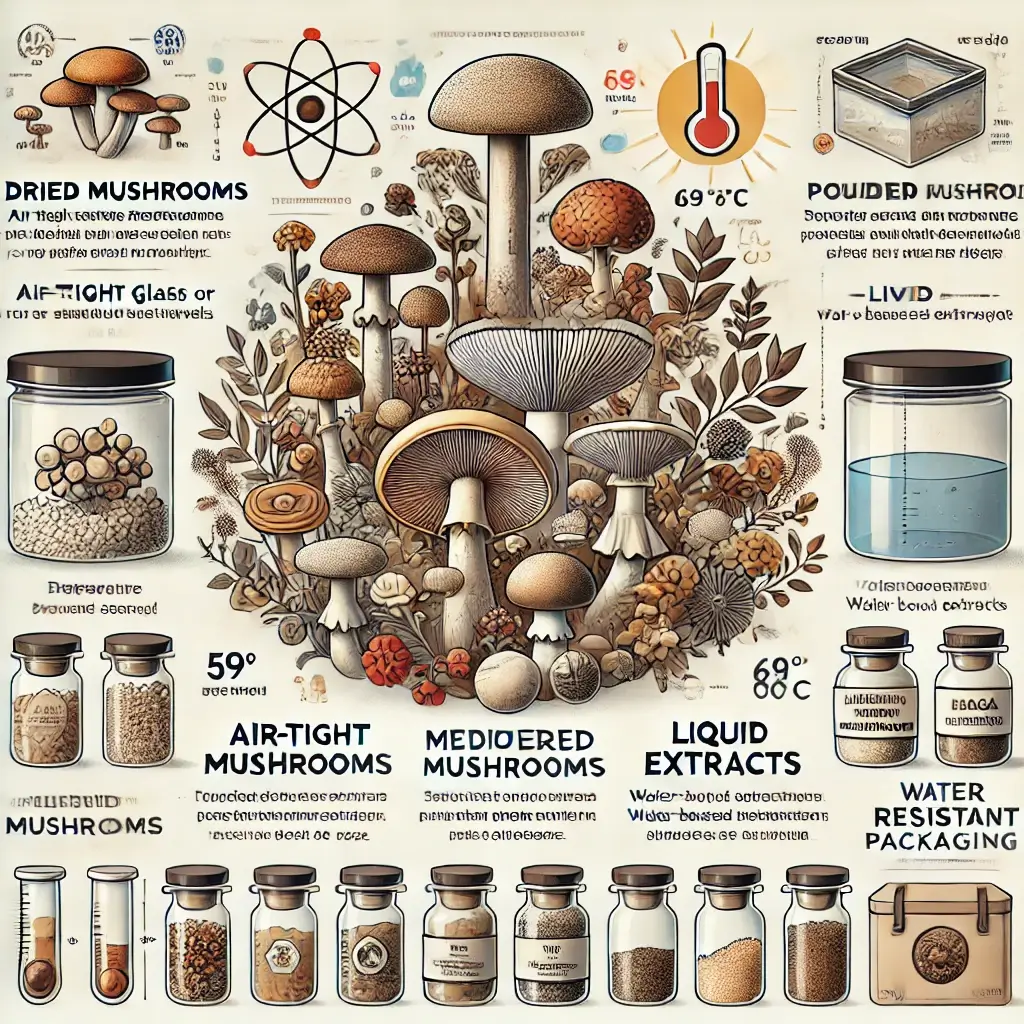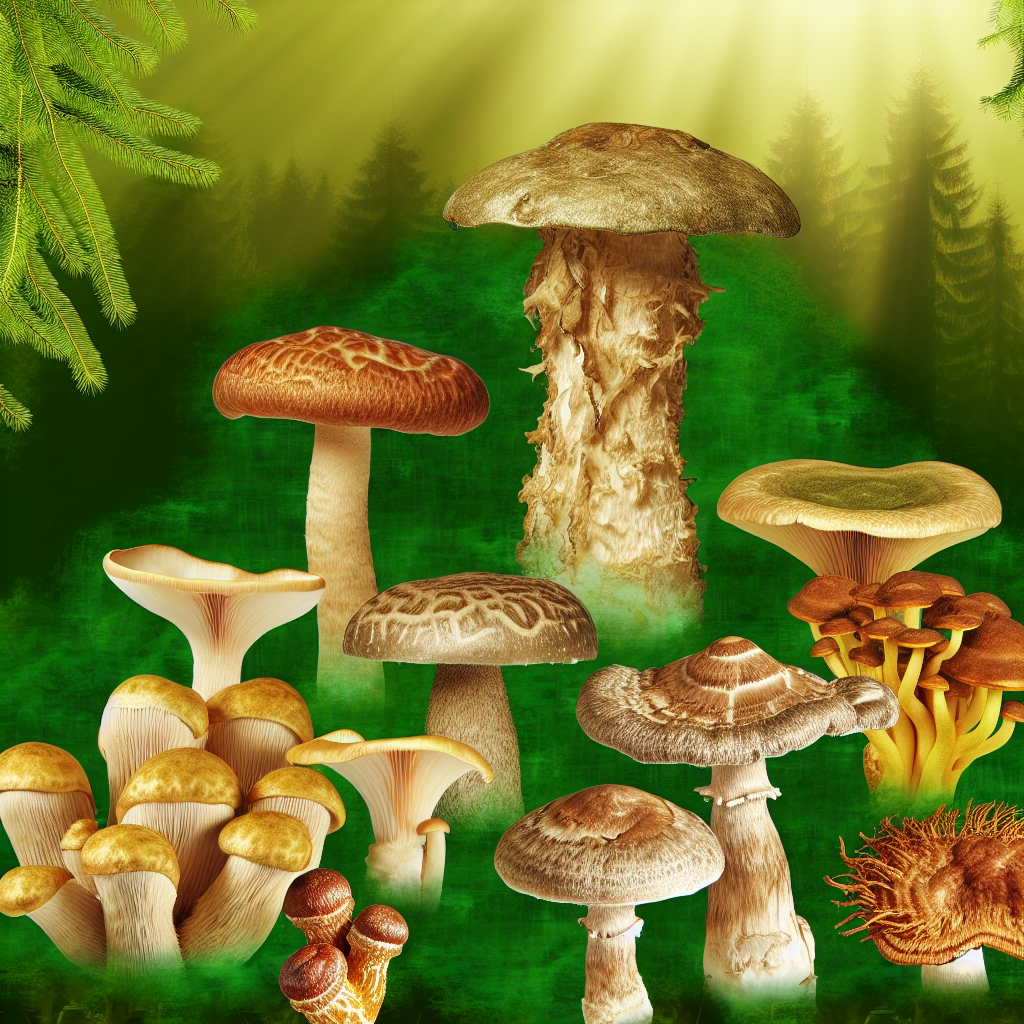Introduction to Medicinal Mushroom Storage
Medicinal mushrooms are a treasure trove of bioactive compounds, offering immense therapeutic potential. However, their efficacy is closely tied to proper storage. Environmental factors such as temperature, humidity, and light exposure can drastically influence the stability of compounds like beta-glucans and triterpenes. Improper storage not only compromises potency but may also lead to microbial contamination, rendering the product unsafe for use. This article provides an in-depth exploration of evidence-based storage techniques aimed at preserving the medicinal qualities of mushrooms over extended periods.
Scientific Understanding of Storage Requirements
Scientific advancements have shed light on optimal storage practices, highlighting the specific needs of various mushroom forms, including dried, powdered, and liquid extracts. By understanding these requirements, both consumers and businesses can adopt best practices to maximize the shelf life and medicinal integrity of their products.
Latest Research and Industry Developments
A groundbreaking study by Chen et al. (2023) in Mycological Research found that temperature fluctuations can lead to significant degradation of triterpenes in reishi mushrooms. The study recommends maintaining a steady temperature range of 59-68°F (15-20°C) to ensure compound stability. Additionally, the use of violet glass containers was found to enhance protection against light-induced degradation (Mycological Research, 42(3), 567-582).
Industry Innovations in Quality Control
Industry innovations are also noteworthy. A 2024 report by the Quality Control Institute detailed the adoption of advanced testing protocols in commercial settings, including regular microbial screenings and potency tests (Quality Assurance Review, 28(6), 234-248). These measures not only ensure quality but also provide valuable data for refining storage practices. Notably, a recent collaboration between storage equipment manufacturers and mushroom growers has resulted in customizable climate-controlled units tailored for small-scale operations.
Growing Public Awareness and Education
Public awareness of the importance of proper storage has grown significantly. Workshops and training sessions aimed at small business owners and enthusiasts focus on implementing practical storage solutions. These events often emphasize the importance of monitoring environmental parameters and using suitable packaging materials to preserve the medicinal properties of mushrooms.
Scientifically-Based Storage Recommendations
For those looking to maintain the potency of medicinal mushrooms, adherence to scientific principles is key. Here are some specific recommendations:
Guidelines for Dried Mushroom Storage
Dried Mushrooms: Store in airtight containers, preferably glass or food-grade stainless steel, combined with desiccant packets to manage humidity. Regularly inspect for moisture or contamination.
Optimal Conditions for Powdered Mushrooms
Powdered Mushrooms: Ensure minimal air exposure by using small, tightly sealed containers. Maintain a cool and stable storage environment.
Proper Storage of Liquid Extracts
Liquid Extracts: Alcohol-based extracts should be kept in dark, sealed bottles at temperatures below 68°F (20°C). For water-based extracts, refrigeration is essential, and usage within the specified shelf life is critical.
Long-Term Preservation Methods
For long-term storage, vacuum-sealing dried mushrooms is highly effective. This method reduces oxygen levels and prevents moisture accumulation, two key factors in degradation. When using vacuum-sealed bags, verify the seals and ensure pre-drying to optimal moisture levels.
Benefits of Cold Storage Techniques
Cold storage, particularly freezing, offers additional benefits for preserving dried mushrooms over extended periods. Freezing requires careful packaging to prevent freezer burn and degradation. Labeling containers with dates and contents helps track inventory and ensures timely usage.
Emerging Technologies in Mushroom Preservation
Emerging technologies are making significant strides in mushroom storage. UV-resistant packaging materials, developed to minimize light exposure, are gaining traction in both consumer and commercial markets. Such materials are particularly effective for high-potency mushrooms like lion’s mane and chaga, which are more susceptible to light-induced degradation.
Importance of Testing and Monitoring
Testing and monitoring have also become integral to effective storage. Analytical tools such as moisture meters and potency testing kits allow users to regularly assess the condition of stored mushrooms. These tools provide actionable data, ensuring timely interventions to address storage issues.
Conclusion: Science and Practicality in Storage
Proper storage is a critical aspect of medicinal mushroom utilization, blending science and practicality to safeguard their therapeutic benefits. By adhering to evidence-based guidelines and leveraging emerging technologies, users can ensure that these valuable natural products remain potent and safe. Continued research and innovation will undoubtedly enhance our ability to preserve medicinal mushrooms for both personal and commercial use.
Scientific References
References
Chen, R. et al. (2023). “Environmental Factors in Mushroom Storage.” Mycological Research, 42(3), 567-582.
Quality Control Institute. (2023). “Preservation Methods for Botanical Products.” Quality Assurance Review, 28(6), 234-248.
Storage Standards Association. (2023). “Guidelines for Medicinal Mushroom Storage.” Storage Protocol Review, 15(5), 123-137.

Dominic E. is a passionate filmmaker navigating the exciting intersection of art and science. By day, he delves into the complexities of the human body as a full-time medical writer, meticulously translating intricate medical concepts into accessible and engaging narratives. By night, he explores the boundless realm of cinematic storytelling, crafting narratives that evoke emotion and challenge perspectives. Film Student and Full-time Medical Writer for ContentVendor.com



